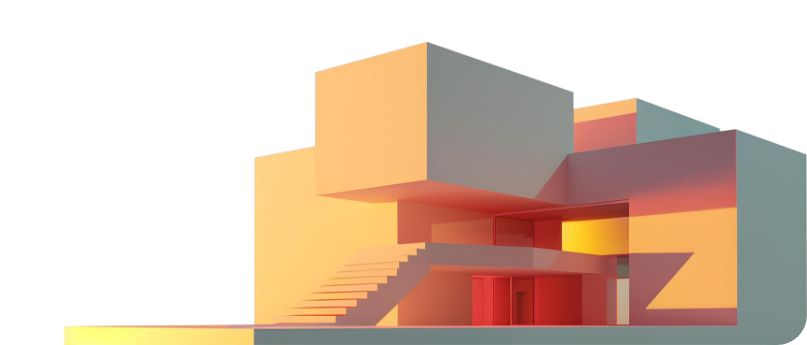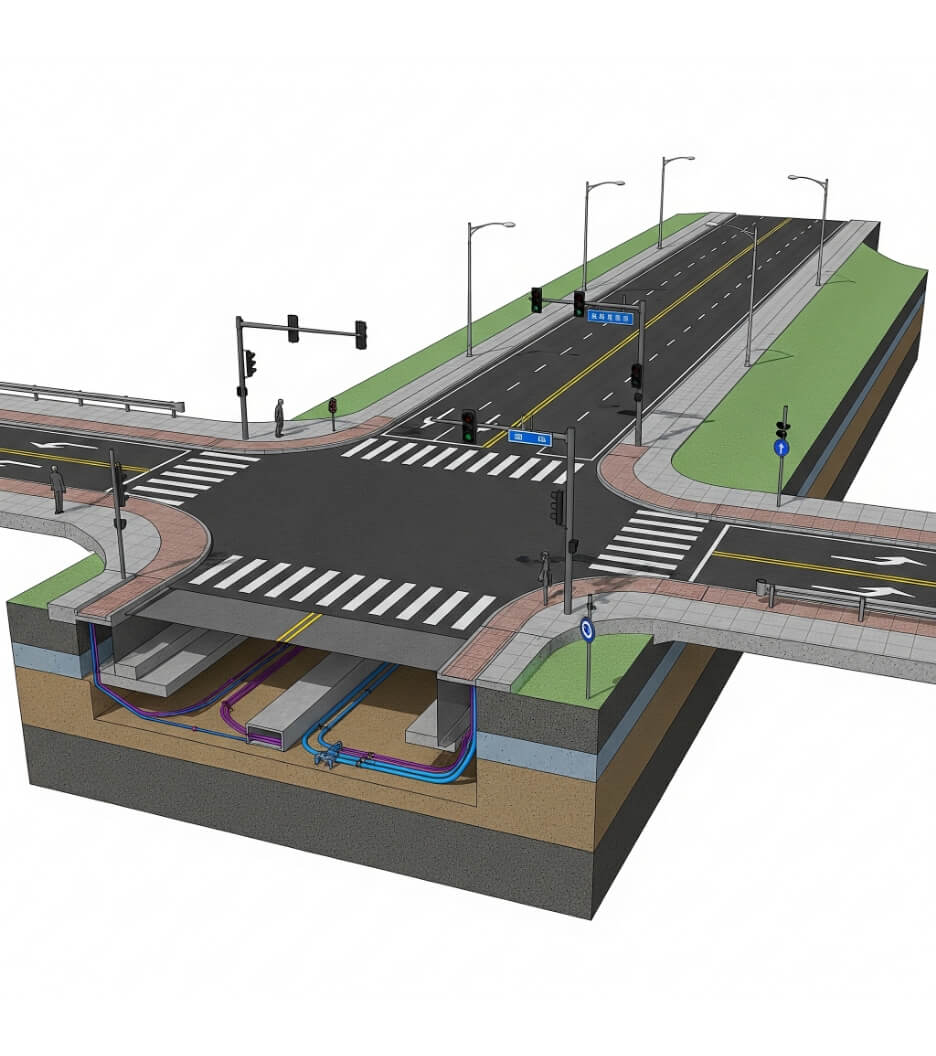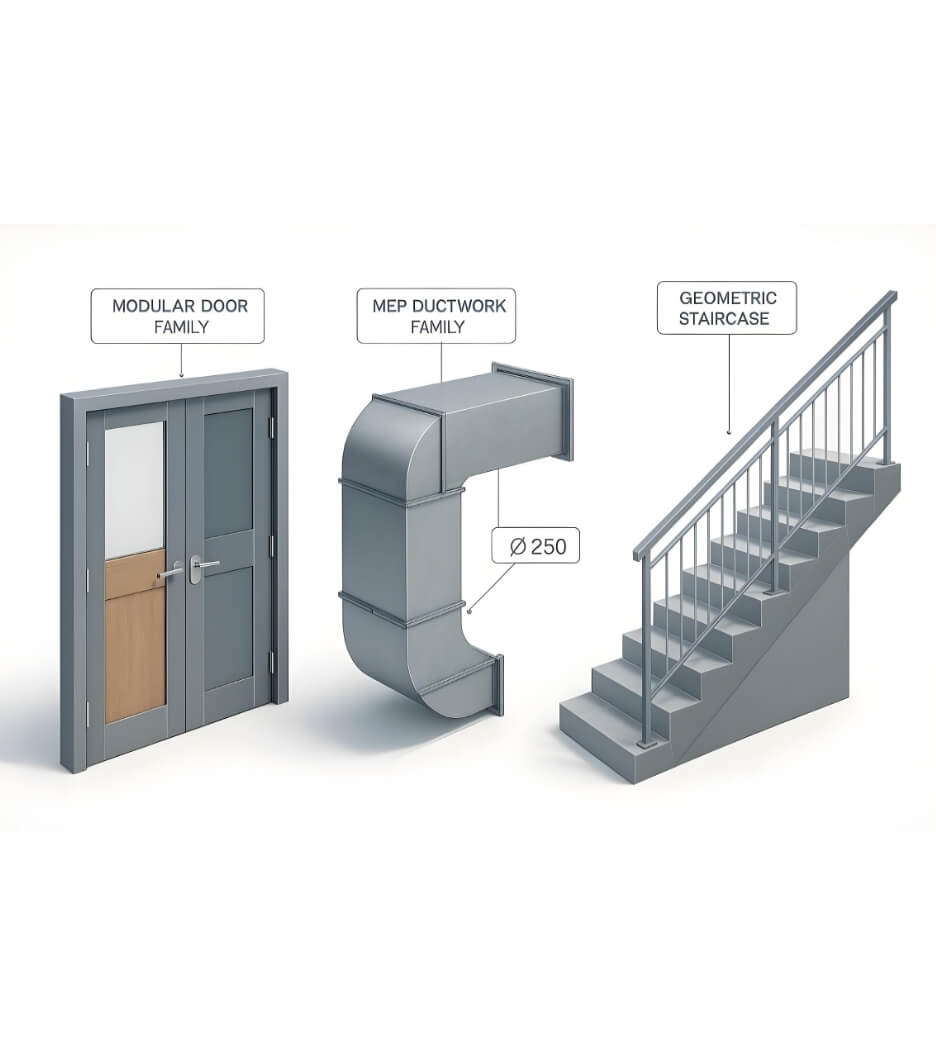 Him Darji
Him Darji
What is BIM Clash Detection and Its Significant Role in Construction Projects?
 Him Darji
Him Darji

Send Us Your Requirement
In the rapid world, AEC construction is constantly booming with the latest technology and software introduction. Speaking of that, BIM services were introduced in the AEC sector about a few years ago, and since then, it has brought some significant transformation in the industry. In addition, the AEC industry has built a strong foundation with BIM services. With growing tech and modernization in the economy, BIM services have also advanced with numerous other technologies, helping to make the construction process more accessible than before. Yet even today, with advanced technology and software, the construction process has witnessed major clashes, errors, and conflicts. To avoid that, building information modeling technology has a clash detection component that identifies and resolves potential clashes or interferences between different building elements or systems in a 3D BIM model. These clashes include conflicts between structural parts, MEP (mechanical, electrical, and plumbing) systems, and architectural components.
Enhance the Construction Process with BIM Clash Detection
Get a Quote
BIM clash detection is essential for AEC professionals as it helps them to identify and resolve potential clashes before construction begins. This saves time, reduces costs, and helps avoid delays and rework on-site. As a matter of fact, the 3D BIM model helps to resolve clashes with automated approaches, consuming less time and effort. Using clash detection, AEC professionals can visualize potential clashes in a 3D model, enabling them to make informed design decisions and any necessary changes before construction begins.
This process improves collaboration between different teams involved in the construction process, including architects, engineers, and contractors. Usually, for clash detection, software like Navisworks helps to identify the slightest error in the 3D BIM model. Furthermore, early detection of conflicts and errors can minimize the cost and save the project time, energy, and money. Hence, BIM clash detection is equally important to cater to a digital representation of the project. To understand profoundly and more clearly, let’s dive into why clash detection plays a vital role in construction projects.
Why is Clash Detection Vital in the AEC Industry?
To be precise, clash detection is a process for detecting, inspecting, and reporting conflicts in a project model. It is required as many models (structural, MEP, and so on) are merged into a single-core BIM model. Clashes in the construction model can lead to delayed project completion, increased use of equipment and materials, and added cost and time. Such mistakes that would ordinarily be identified on the job site (with substantial cost and schedule implications if fixed at that stage) can now be seen in the office even before anyone sets foot on the job site, thanks to clash detection. BIM services allow for the detection of clashes between items (a steel rod wholly immersed inside a concrete wall), preventing the invested money, time, and effort.
Moreover, clashes or potential errors can happen in any stage or at any point of the construction. Typically most common clashes are identified in MEP components as they are complex, demand accurate synchronization for smooth functioning and more. Therefore to keep an eye on MEP disciplines, MEP clash detection plays a crucial role in construction projects. Since the significance of all the three disciplines are quite major, it is evident to ensure that each system functions properly without any error in design or implementation. Additionally, MEP clash or errors can be costly as well as require a lot of rework in the design that can potentially delay the timeline.
It is also becoming more sophisticated, allowing users to search for clashes within subgroups, such as collisions between architectural elements and structural sections, columns, ducts, and plumbing elements. Vibrant colors are utilized to identify conflicts between two separate parts, but some symmetrical clashes are always allowed. When detecting hits, the level of information in BIM modeling is critical. As we all know, the construction process is complex and has multiple aspects to look after. Therefore, it is better to understand the types of clash detection briefly.
Types of Clash Detection in the BIM Model
Architectural, structural, and MEPF layouts have numerous types of clash detections. Throughout the construction project, different stages have different errors that can bring insignificant results in the project and its facilitation properties. The following are the types of clash detection in the BIM model.
The Hard Clash
When two items occupy the same space or collide, this is called a brutal clash. If you complete all steps in the plan interaction, it can be costly to rectify. For example, pipework through a steel structure is an example of a brutal clash. It can be found in the mathematical model or semantic calculations within the BIM object library and inserted data.
Soft Clash
Soft clash occurs when elements or objects are not provided with the necessary foundation or defenses or when the line of tolerance is crossed. Building principles and codes are guaranteed when the item is fed into the BIM software. One example is climate control system unit clearances essential for structure security and upkeep. This can help with the MEP model’s support and security challenges.
4D/Workflow Clash
Workflow clash refers to the clash of work operations. This often entails scheduling issues for employee reservations, transportation of supplies and equipment, and event planning. Such disagreements diminish a company’s productivity and impact transdisciplinary efforts. The subsequent clashes might cause delays in work or activity, making such occurrences uncomfortable.
Benefits to Avail from Clash Detection in 3D BIM Modeling
Benefits to Avail from Clash Detection in 3D BIM Modeling
Minimizing Modifications in the Building Process
Reduction in Overheads
Accurate Design documentation
Repetitions can be reduced to depths
Improved collaboration and coordination
Faster Construction
Minimizing Modifications in the Building Process
By utilizing Clash Detection during the design process, all aspects of the project are carefully planned and organized, thereby reducing the likelihood of unexpected revisions needed during construction. By scrutinizing everything as a 3D model, identifying conflicts becomes more accessible, thus avoiding the need for on-site modifications and resolving problems during the design stage. By improving planning, visualization, and project execution during the design phase, BIM lowers the occurrence of change orders during the construction phase. This system collects all critical project information in a 3D model, making identifying conflicts during the pre-construction stage easier. This results in decreased chances of rework occurring during the construction phase. With all the project details represented through a 3D model, BIM simplifies the identification of potential clashes during the pre-construction stage. Collaboration among team members using BIM tools culminates in a clash-free resolution.
Reduction in Overheads
Depending on the conditions, a clash discovered during construction might cost thousands of dollars and weeks of the project timeline, depending on the nature of the conflict and where it is found in the process. By applying clash detection, we can avoid building costs exceeding the estimated cost. You can save more on overheads by outsourcing BIM services providers for your project. These companies will provide you with the best results at the best prices.
Accurate Design documentation
BIM innovation and detection location have made it easier for project owners and engineers to build upgraded structure designs without worrying about the type of construction issues. A single component alteration is represented in multiple perspectives because of the high-level nature of pattern identification and BIM programming tools. Similarly, because everything is made more accessible, information flow is consistent, reducing manual work and increasing efficiency. With BIM modeling services and clash detection, designers, engineers, and architects may generate complicated building plans without worrying about the accuracy of construction paperwork. Every change to any item is automatically reflected in all views thanks to sophisticated collision detection and BIM software packages. Furthermore, all multi-trade models are synced in a single platform, making information sharing simple and removing the need for several platforms.
Repetitions can be reduced to depths
When everything is planned, visualized, and dealt with using building information modeling during the planning stage, it results in fewer adjustments throughout the development stage. Because everything is reviewed as a 3D model, distinguishing clashes becomes more accessible early, allowing the team to plan for problem resolution without difficulty.
Improved collaboration and coordination
Implementing a clash detection technique enables project teams to share information more quickly. Clash detection ensures speedy knowledge transmission and efficient coordination among building process, engineering, and design staff. A digital collision detection technique enables project teams to effortlessly exchange and interact in a single shared data environment (CDE). Incorporating real-time reviews and markups into all graphics improves, accelerates, and streamlines development while eliminating human error. BIM and clash detection software, such as Navisworks, ensures concise information to facilitate cooperation between personnel from many departments, whether they are in the planning, designing, development, or architectural sections. The audit and markup capabilities and a continual reflection into the graphics make the development cycle faster, better, and more proficient, with no room for accidental mistakes.
Faster Construction
Clash detection aids in the elimination of construction delays caused by disagreements between the design and execution phases. Construction is frequently delayed due to a lack of coordination, positive communication between teams, and faults in project implementation. Clash detection aids project delivery by detecting clashes before the construction phase, resulting in execution as planned and scheduled. A real-time reflection into all visuals accelerates the construction process and eliminates the possibility of error due to neglect during the design phase.
Conclusion
In conclusion, clash detection is a crucial process for AEC professionals, enabling them to identify and resolve potential clashes between different building elements and systems before construction begins. This process saves time, reduces costs, and helps avoid delays and rework on-site. With BIM clash detection, AEC professionals can improve collaboration, make informed design decisions, and build better, more efficient buildings. Therefore, integrating BIM clash detection into the construction process is essential for AEC professionals to improve the quality of construction projects and achieve successful project outcomes. UniquesCADD is a top BIM company based in India, offering extensive BIM clash detection services by a team of professionals using the latest technology.


